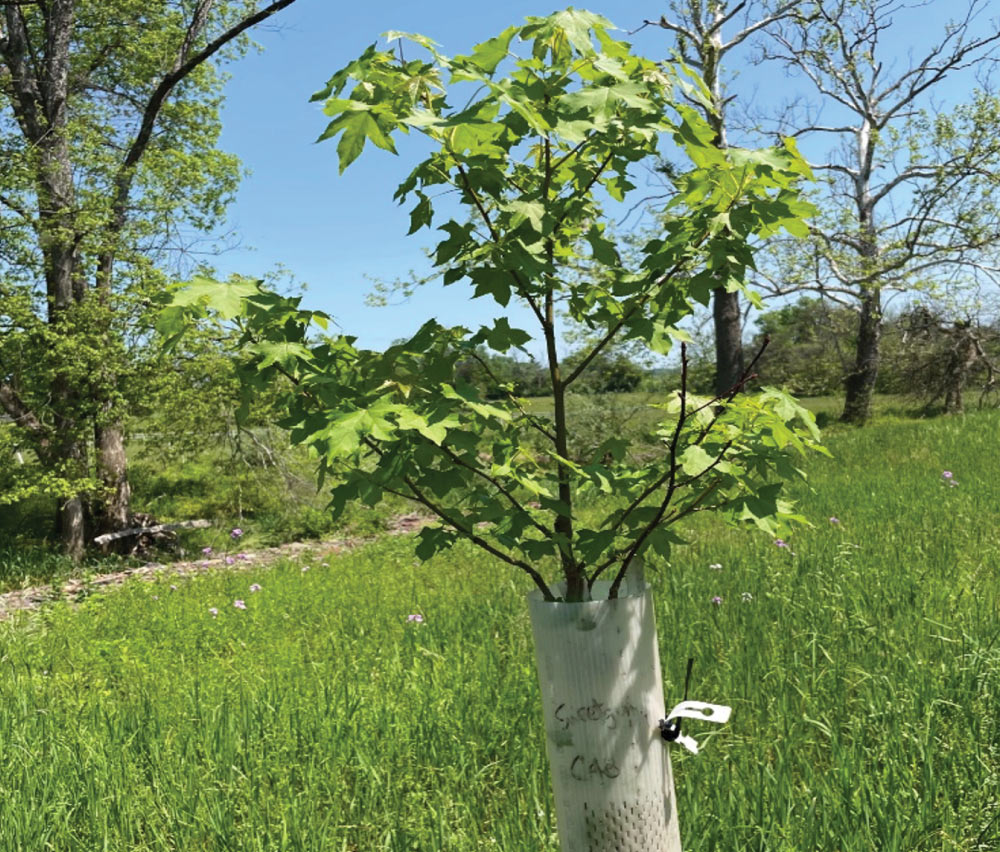
Same location, same time frame: Moore’s Creek Reforestation Project
Sweetgum
Without SCP
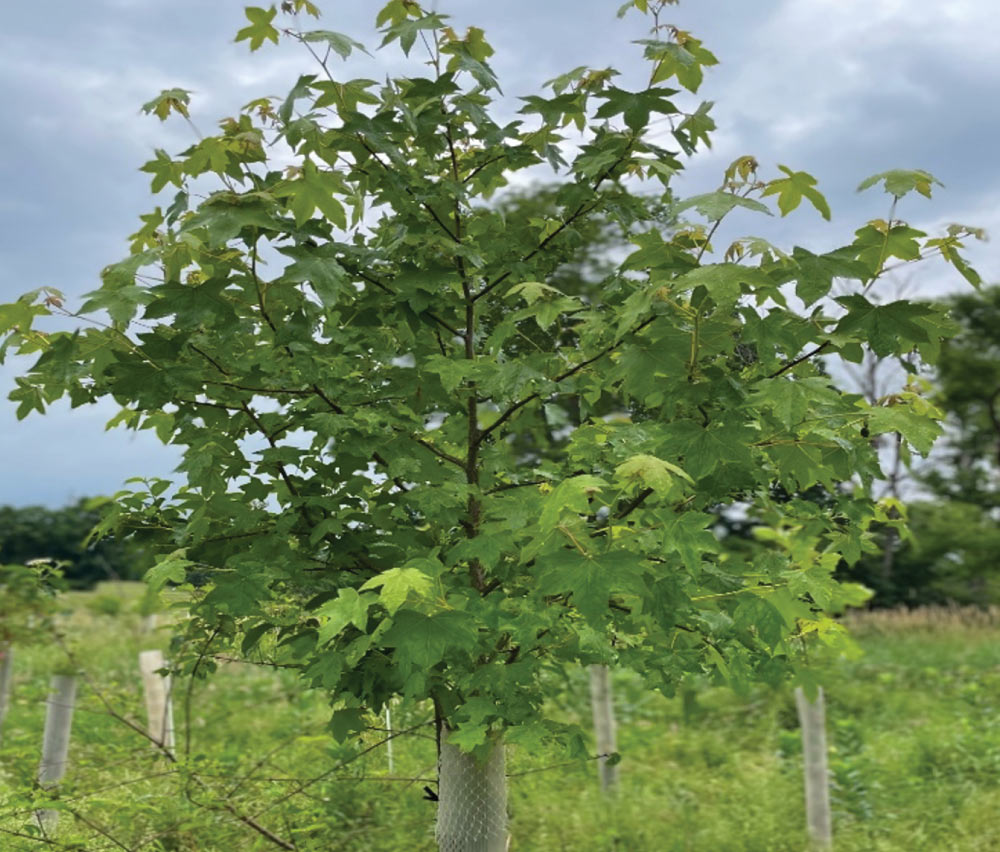
Same location, same time frame: Moore’s Creek Reforestation Project
Sweetgum
With SCP
SCP restores forest soil productivity with its breakthrough soil fertility amendment that delivers thousands of dozens of essential minerals, beneficial microbes, and high-quality and stable organic matter. The result is trees that grow much faster and are more resistant to insects and disease, resulting in a higher tree survival rate than the 50% survival rate norm.
Most reforestation projects worldwide plant just one tree species. This compromises biodiversity and constrains the overall productivity and health of the forest. SCP uses a 20-species mix of trees in its reforestation projects to ensure biodiversity, ecosystem health, and long-term resilience.
SCP has developed a proprietary planting process that effectively ensures the uptake of the key nutrients in amended soils by young plants as they grow.
On projects where SCP’s soil fertility has been applied the results have been 4 and 5 x normal tree growth and 90% survival rate.
Jamal Kadri of Lima Family Farms holds a control tree that is 2 feet tall (without SCP’s fertility) next to a test tree to his left which is 7 feet tall (with SCP’s fertility). Both trees were planted in late May 2022.
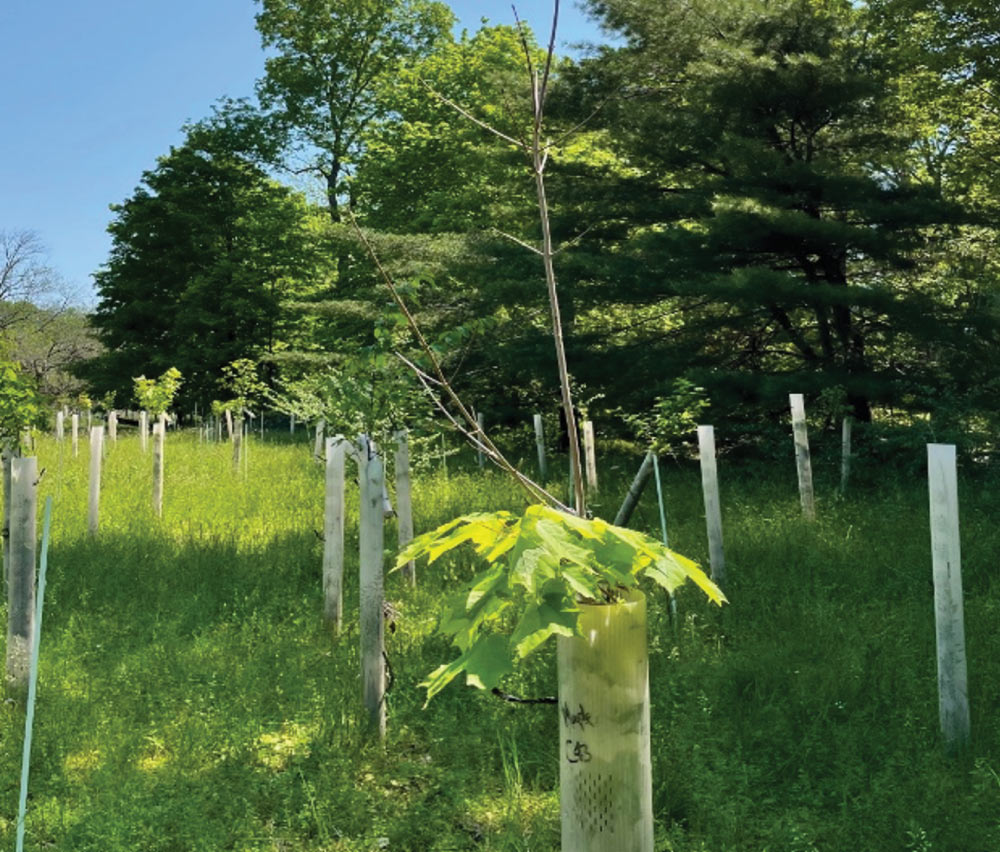
Same location, same time frame: Moore’s Creek Reforestation Project
Maple
Without SCP
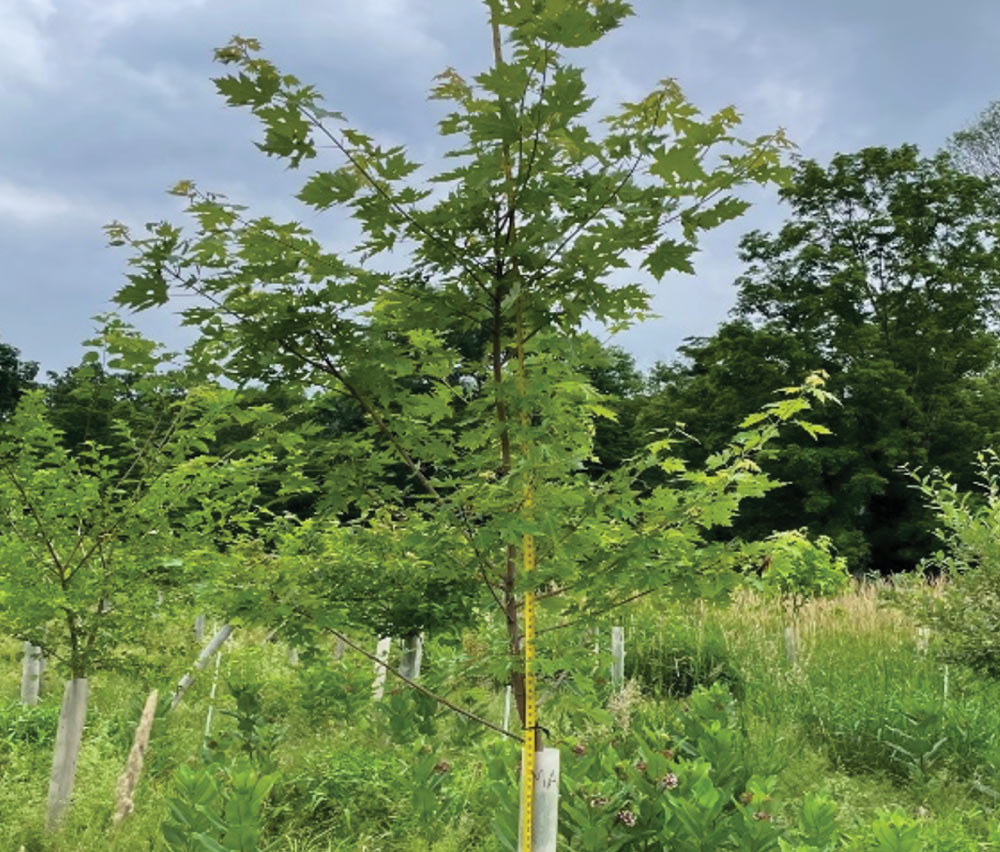
Same location, same time frame: Moore’s Creek Reforestation Project
Maple
With SCP
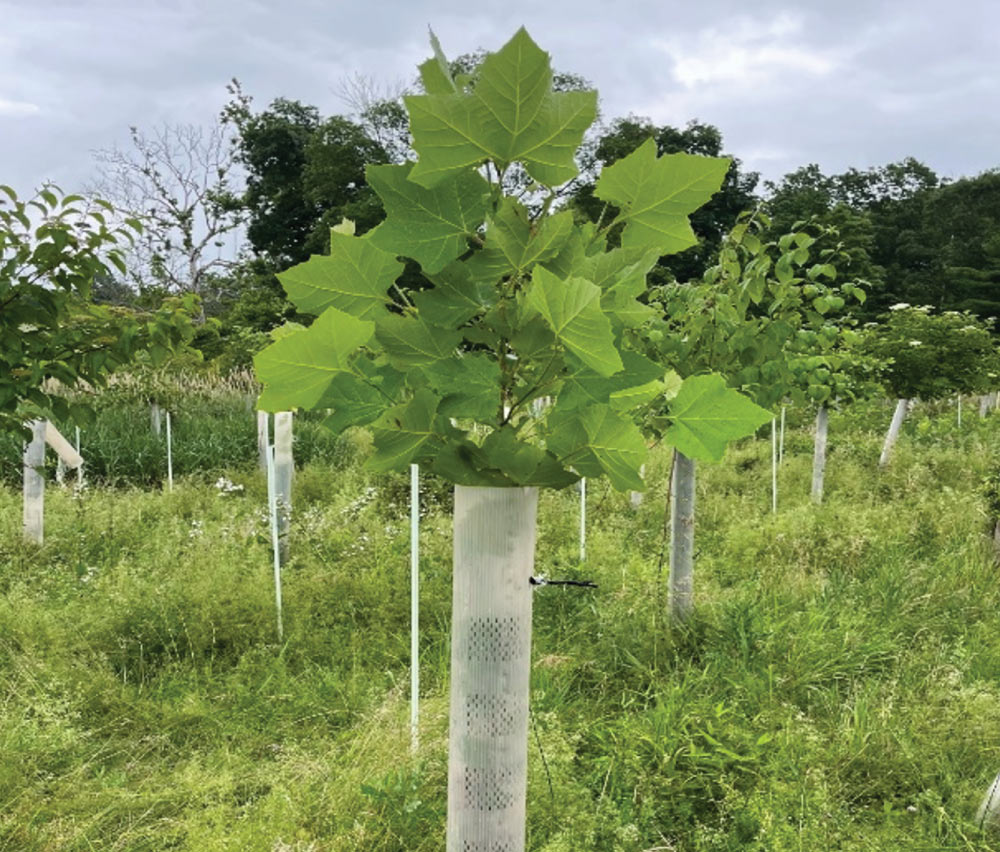
Same location, same time frame: Moore’s Creek Reforestation Project
Sycamore
Without SCP
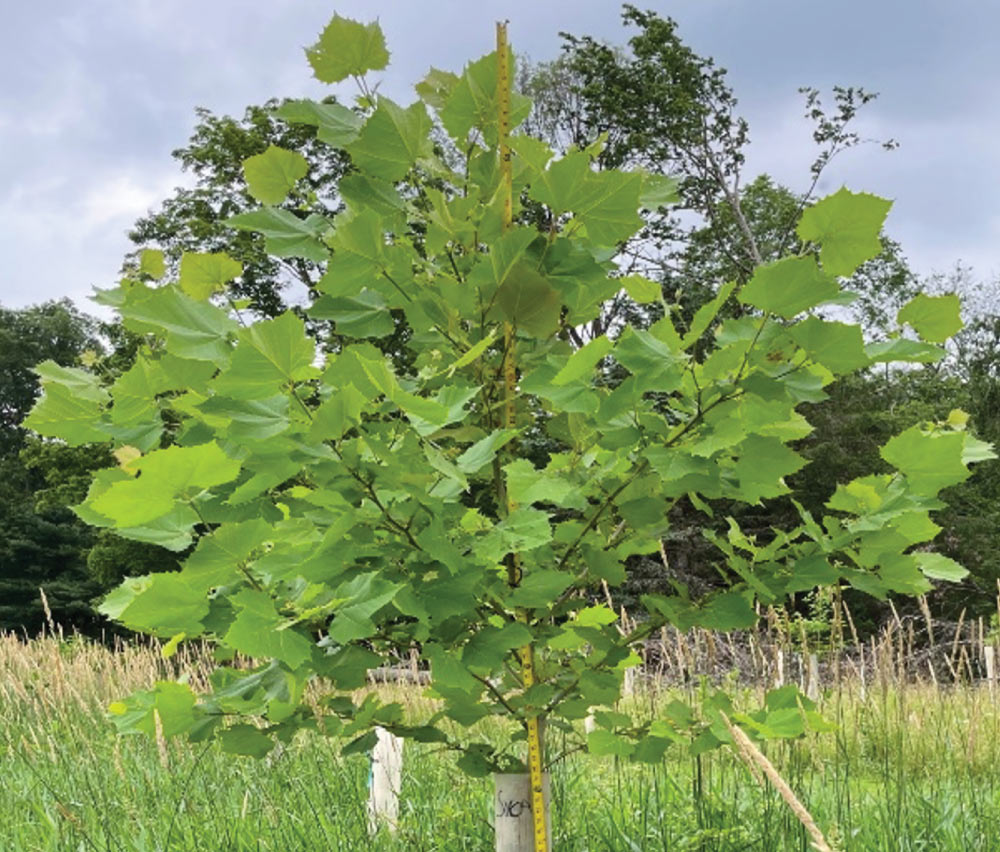
Same location, same time frame: Moore’s Creek Reforestation Project
Sycamore
With SCP
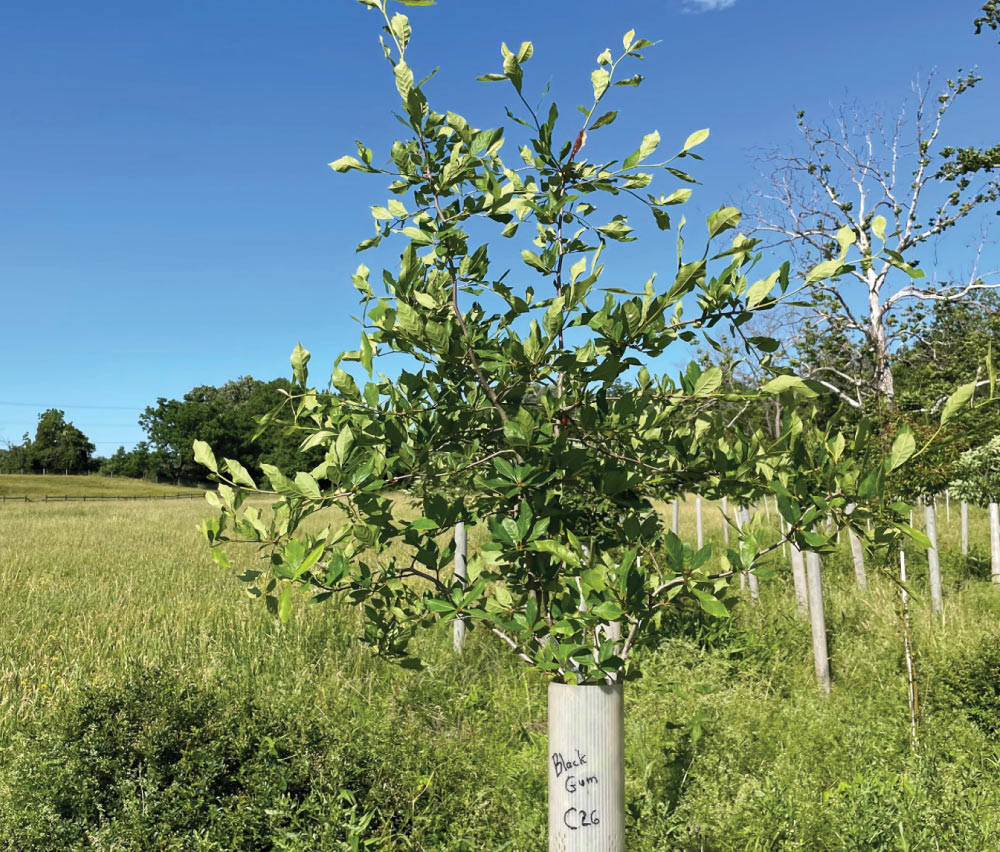
Same location, same time frame: Moore’s Creek Reforestation Project
Black Gum
Without SCP
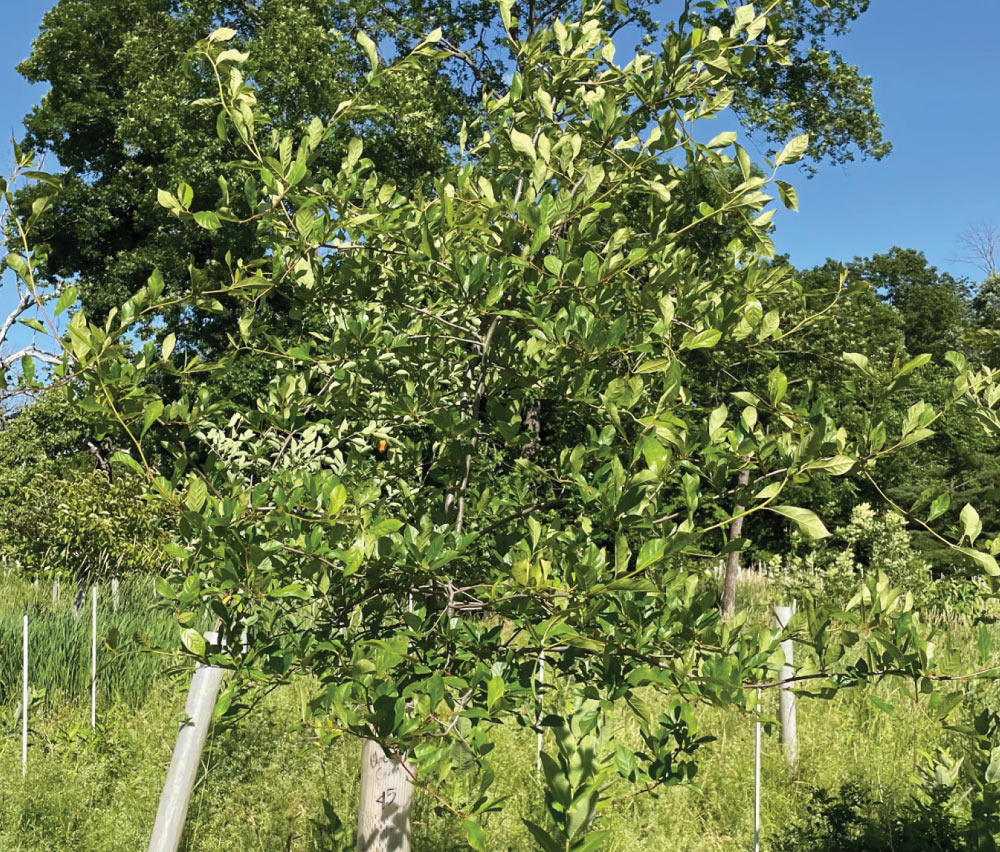
Same location, same time frame: Moore’s Creek Reforestation Project
Black Gum
With SCP
SCP’s Reforestation System combines our powerful soil fertility with a 20-species mix of trees that ensure bio-diverse forests, much higher (71%) tree growth rates, and far higher tree survival rates than today’s 50% norm.
More tree growth is key because with it comes more rainfall, evapotranspiration, cloud formation and reflection of solar energy, all of which keep the earth cooler.
Conducted pilot among two year old trees in a reforestation project funded by Mercer County NJ, in Lambertville, NJ. In June 2021, 100 of the two-year old test plants received our soil fertility amendment and were measured. Some 50 control plants, grown in the exact same land area and under the exact same conditions, did not receive our fertility.
The trees with our fertility achieved a 71% higher growth rate when measured in September 2021. Notably, the same result was achieved in measurements in summer of 2022, even despite an extreme drought in Central New Jersey in 2022. Results were measured by Steward Green, an environmental consultancy based in New Jersey.
As part of our ongoing R&D on reforestation, we planted 12,000 trees in summer of 2022, comparing results with our soil fertility amendment versus without.
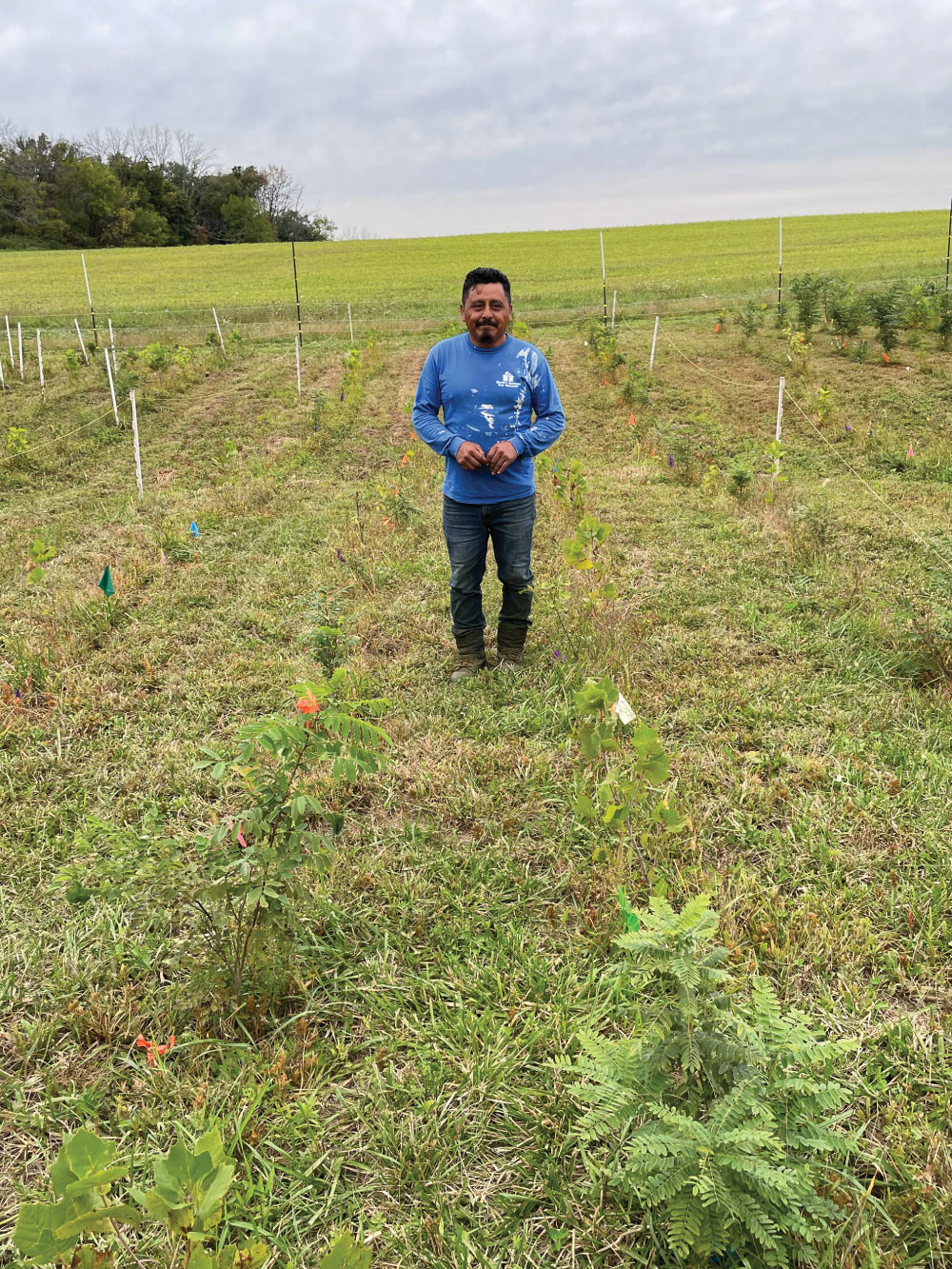
Lima Family Farms Hillsborough, NJ
Without SCP
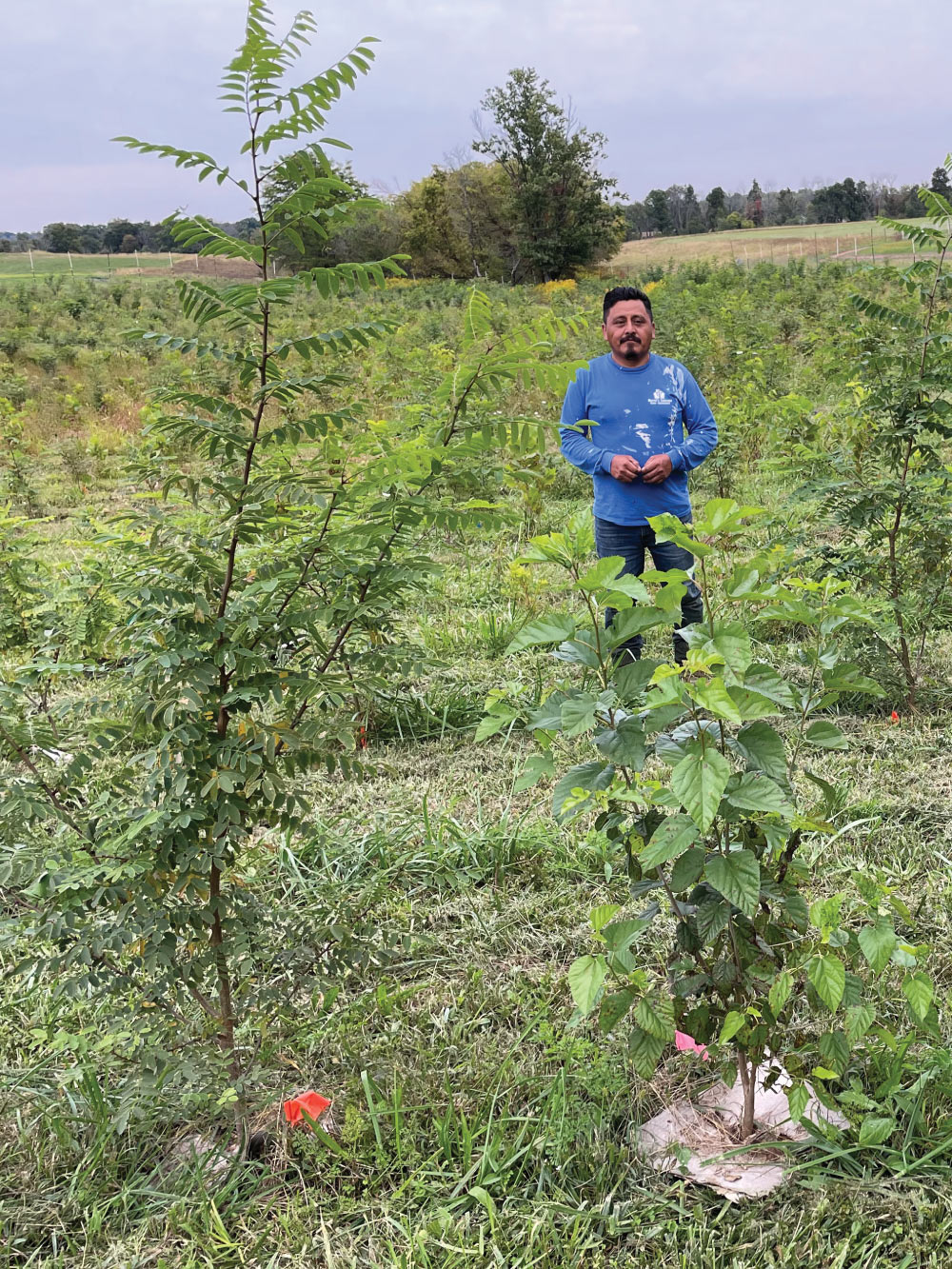
Lima Family Farms Hillsborough, NJ
With SCP
The soil that received our fertility amendment generated trees that averaged 6 to 7 feet tall. Without our fertility the trees averaged 1.5 feet to 2 feet tall. In addition to height, the trees that received our fertility were more robust, had more branches and “girth,” were darker green and overall appeared much healthier.
Large Volumes Applied — 10 tons per acre
